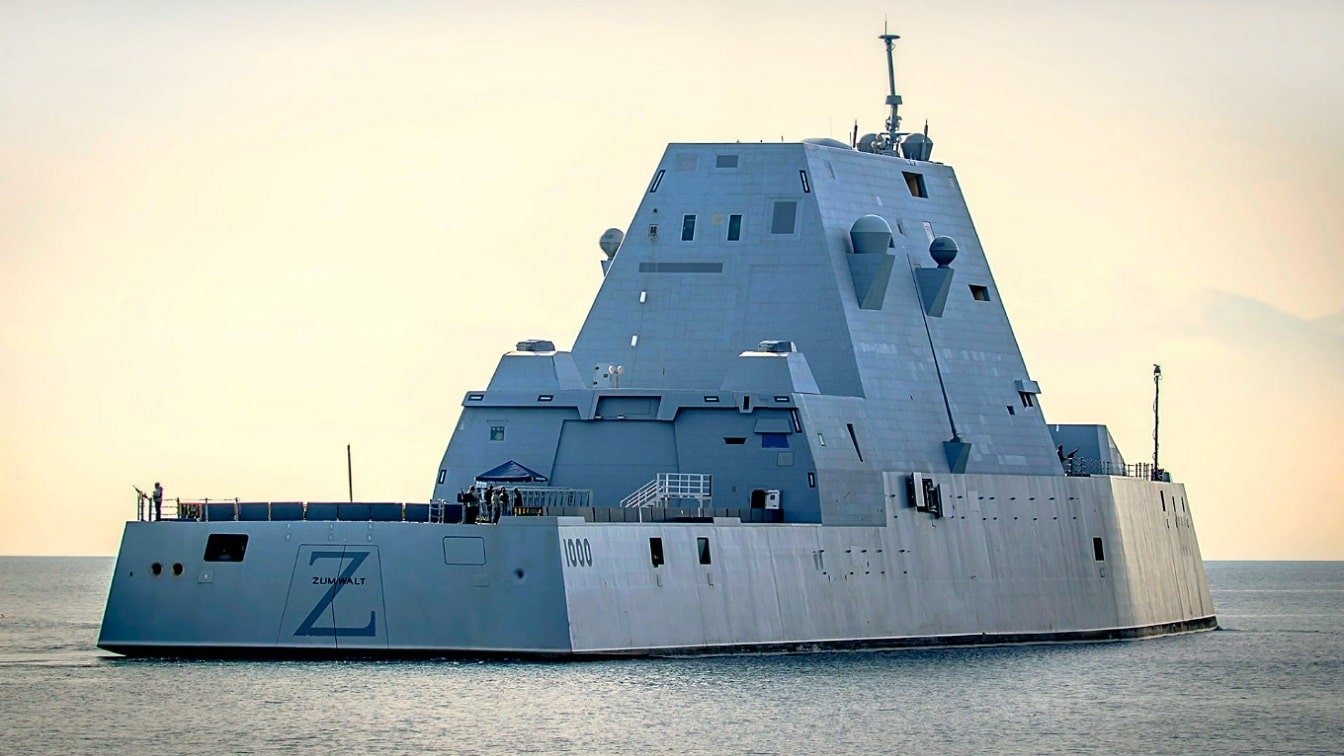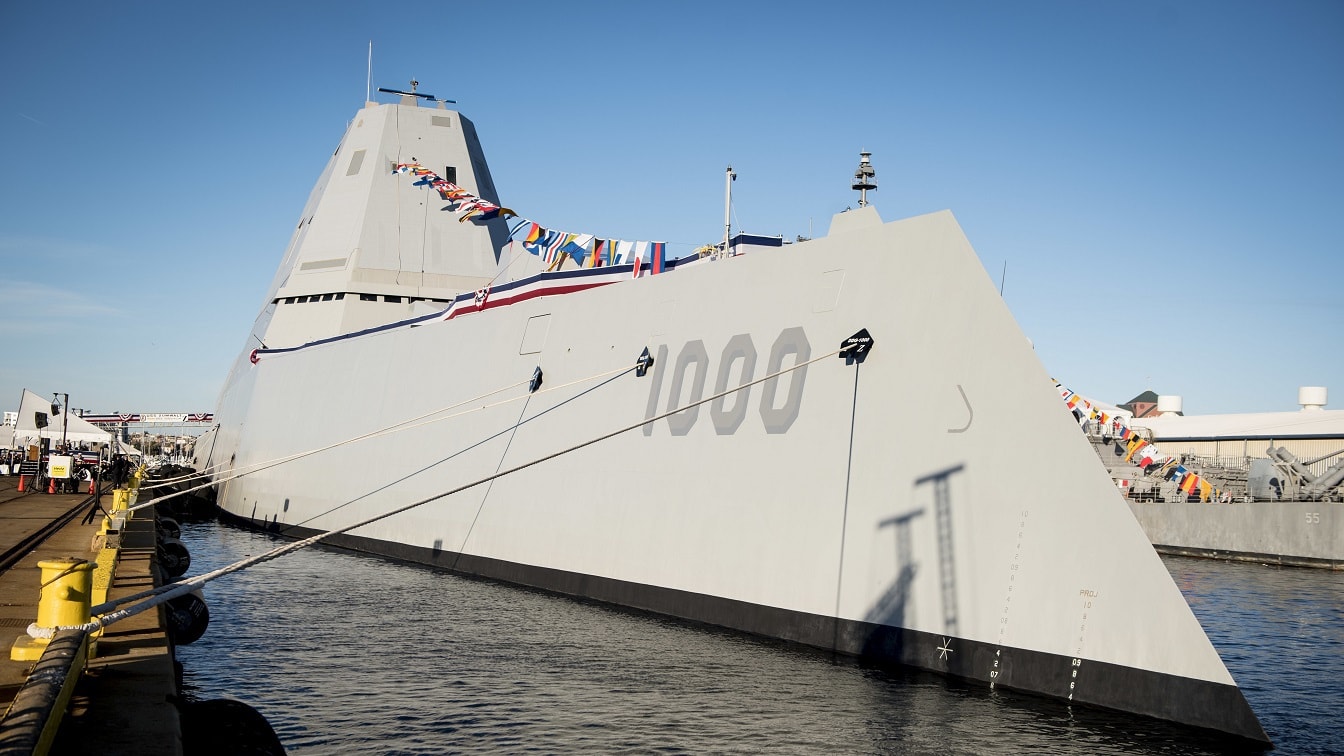
‘Stealth’ Zumwalt-Class: The Navy’s Giant Stealth Destroyer Fiasco
Meet the Zumwalt-Class – The Zumwalt-class destroyer was designed to be the future of the US Navy.
Incorporating ultra-modern stealth and weapon technology, 32 Zumwalt’s were planned for delivery – with the expectation that the new ship would replace the aging Arleigh Burke-class destroyer.
But when the Zumwalt program went hazardously overbudget – and the ship performed below expectations, plans to replace the proven Arleigh Burke changed.
The Navy pulled their support from the Zumwalt and asked Congress to stop delivering the troubled ship.
Instead, the Navy wanted more of the old Arleigh Burke destroyers that had proven so reliable.
In the end, only three Zumwalts were ever delivered to the Navy.
Zumwalt-Class: Designed around stealth technology
The Zumwalt, chock full of novel technology, was meant to be a watershed moment in naval history.
Most notably, the Zumwalt was designed as a stealth ship. Although a full 40 percent larger than the Arleigh Burke, the Zumwalt’s radar cross section was the size of a fishing boat.
To achieve such a small RCS, the Zumwalt was built with a tumblehome style, in which the hull grows narrowed above the waterline.
And while the tumblehome style was unusual among modern warships, the hull shape was not new; wooden warships often used the tumblehome build.
Again, in the late 19th century, tumblehome hulls came into fashion, with great power nations crafting steel warships in the style.
But after three of four Russian tumblehome-built battleships were sank in the Russo-Japanese War, the tumblehome abruptly fell out of fashion, where it stayed for a century.
Now, however, the tumblehome is experiencing a renaissance, as the design has been proven to have a low-RCS.
Further lowering the Zumwalt’s RCS is a composite deckhouse that encases the ship’s sensory and electronic equipment in low-RCS material. Thanks to the composite deckhouse – and the tumblehome design – the Zumwalt is roughly 50 times harder to locate on radar than older model destroyers.

Additionally, the Zumwalt is an uncommonly quiet vessel. In fact, the Zumwalt’s acoustic signature is more comparable to the Los Angeles-class submarine than to another destroyer.
Yet, questions have been raised about the utility of the Zumalt’s stealth design. The Zumwalt was slotted to provide Naval Surface Fire Support, especially against land-based targets. Accordingly, the ship was expected to operate in crowded, close-to-shore environments where, guess what, ships are tracked visually, where stealth tech goes out the window.
Compounding the problem, the Zumwalt was built around a formidable weapons platform – and as soon as the Zumwalt began firing the weapons it was designed to fire, the ship’s stealth would be compromised.
The Future of the Zumwalt: Hypersonic Missiles?
The Zumwalt is scheduled to test fire hypersonic missiles sometime in 2025. “There are no less than five captains involved in making sure this happens,” Captain Tyson Young of the Zumwalt Integrated Combat System office said. “We’re integrating an underwater weapons control system with [tactical support center] control in order to affect the data and message transfer to launch the missile.”

The Zumwalt should ultimately be able to field 12 missiles aboard each destroyer.
To be clear, hypersonic missiles are not nuclear weapons. “It’s strategic, but it’s not nuclear,” said Vice Admiral Johnny Wolfe. “If you look at the numbers, particularly with what we’re going to with the ranges, it is very much a strategic asset. You can hold very high-value targets at risk.”

Maybe hypersonic missiles will help the Zumwalt program redeem itself.
Harrison Kass is a prolific defense and national security writer. An attorney, pilot, guitarist, and minor pro hockey player, Harrison joined the US Air Force as a Pilot Trainee but was medically discharged. Harrison holds a BA from Lake Forest College, a JD from the University of Oregon, and an MA from New York University. Harrison listens to Dokken.
All Images are Creative Commons.


